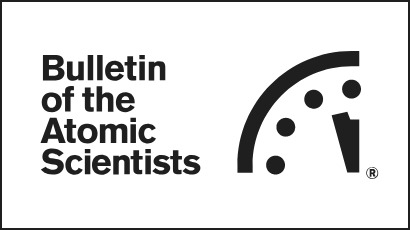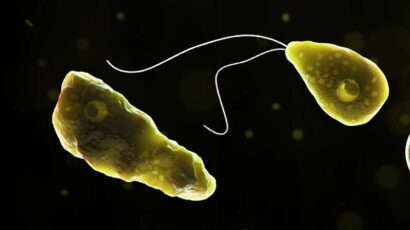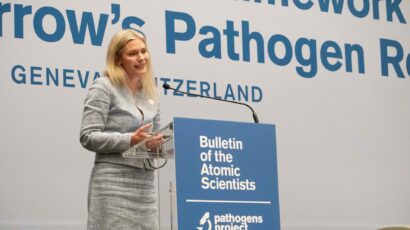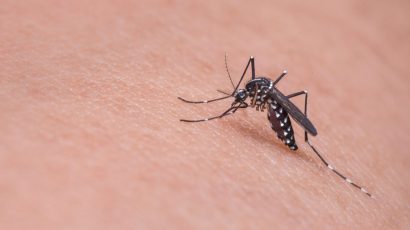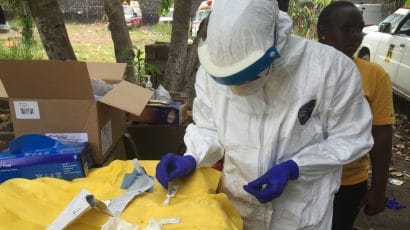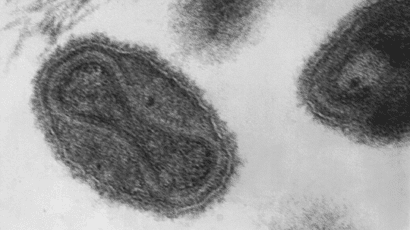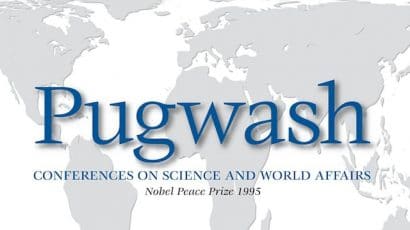Search results for
Parts of the sum: Unpacking the dynamics of biological weapons proliferation
The proliferation potential of biological weapons is an exceedingly complex topic, only made more complicated by semantic inconsistencies. For example, the Biological and Toxin Weapons Convention (BWC), considered to be the cornerstone of the global biological weapons nonproliferation regime, has been variously termed an arms control, disarmament, and nonproliferation treaty.
Dealing with advances in science at the Seventh BTWC Review Conference
Ahead of the Seventh Biological and Toxin Weapons Convention (BTWC) Review Conference, which will be held December 5-22 in Geneva, Switzerland, the United Nations published 26 advance papers produced by state parties to inspire serious and spirited discussion for the event -- and at least six of these papers focused on how advances in science and technology impact the BTWC and how, in the future, these advances should be considered by the stat
Neuroethicists are not saying enough about the problem of dual-use
The minutes of many U.K. Ministry of Defense's secret committees' meetings held during the Cold War period are now available to the public in the National Archives. Thus, we know that one March day in 1959, the Chemistry Committee of the U.K.'s Advisory Council on Scientific Research and Technical Development met in London to discuss the possibilities for developing new chemical incapacitating weapons agents--including ones with neurological effects--something both the United Kingdom and its allies were trying to achieve.
How the Biological Weapons Convention could verify treaty compliance
While chemical and nuclear weapons treaties have systems to verify compliance, the Biological Weapons Convention (BWC), a global pact banning bioweapons, does not. Now, as technologies such as genome editing and AI converge and accelerate, placing powerful capabilities in the hands of a growing number of actors, treaty members are once again discussing the topic of verifying compliance with the treaty.
Climate change fueled a rise in rare disease outbreaks last year
The temperature-sensitive pathogens that caught U.S. communities off guard are a grim preview of the future.
How likely is an existential catastrophe?
You’re far more likely to die in an existential catastrophe than you think. And the risk of such a catastrophe is growing.
A pandemic of bad science
Compared to public health crises of the recent past, there has been a distinct change in how science is communicated to the public. Experts no longer control the narrative through trusted outlets, and, accurate or not, social media allows anyone to craft their own narrative about science and publish it to an audience of millions.
Bulletin of the Atomic Scientists: Call for submissions for Voices of Tomorrow
In 2013, the Bulletin of the Atomic Scientists will launch "Voices of Tomorrow," which will feature a monthly essay, op-ed article, or multimedia presentation written or produced by a high school student, college undergraduate, or graduate student. The topic must address some aspect of at least one of the Bulletin's core issues of nuclear weapons, nuclear energy, climate change, biosecurity, or emerging technologies.
How to avoid human-made pandemics
The Bulletin of the Atomic Scientists’ Independent Task Force on Research with Pandemic Risks agreed that research with pandemic risks should proceed only when the research community and relevant oversight bodies can demonstrate that the research would be conducted safely, securely, and responsibly; that no alternative and safer research could reach the same public-health ends; and that adequate assurances are provided of substantial benefits expected in the near term, with a plausible plan for equitable global distribution of these benefits.
Biodefense and the next presidency
President-elect Trump has the opportunity to make his country safer against biological threats—if he focuses on these five things.
Preventing a man-made pandemic
There are reasons to fear lab-manufactured pathogens, but also ways to minimize the risks by building confidence in scientists and states
The merits of a biochemical framework convention
The Bulletin has been hosting an engaging roundtable discussion on the "The Military Application of Neuroscience Research," during which neuroscientist Christopher Green challenged the notion that "traditional arms control approaches could be relevant to this domain." Referring to the recent National Academies study that he chaired, Military and Intelligence Methodology for Emergent Neurophysiological and Cognitive/Neural Science Research in the Next Two Decades, he wrote: "The
How can we reduce the risk of human extinction?
In the early morning of September 10, the Large Hadron Collider will be tested for the first time amid concern that the device could create a blackhole that will destroy the Earth. If you're reading this afterwards, the Earth survived. Still, the event provides an opportunity to reflect on the possibility of human extinction.
Scientists are working on vaccines that spread like a disease. What could possibly go wrong?
Self-spreading vaccines that use viruses to confer immunity instead of disease among wild animals could help stop animal diseases from jumping to humans, quashing the next pandemic before it starts. But the new technology is not without risks.
Private-sector research could pose a pandemic risk. Here’s what to do about it
US government policies that subject enhanced potential pandemic pathogens research to extra scrutiny should be expanded to cover independently funded research. The risks that such research might pose do not disappear merely because no government funding is involved.
The postponement of the NPT review conference. Antagonisms, conflicts and nuclear risks after the pandemic
A Pugwash document concerning nuclear problems and tensions in the time of COVID-19. The document has been co-signed by an extensive list of Pugwash colleagues and personalities.
Reduce the spread of flu with good hand hygiene
A recent report by the President's Council of Advisors on Science and Technology estimates that a resurgence of the H1N1 influenza virus during the 2009-2010 flu season could lead to 30,000-90,000 deaths, mostly in children and young adults. What's worse, the flu season could begin as early as September, just as school is starting.
“Pandemic” author Sonia Shah
The Bulletin interviews the science writer on the Zika virus, novel pathogens, and how to prevent our next epidemic of disease.
Do U.S. biodefense efforts need systems analysis?
As a young biologist I was offered a post-doctoral fellowship at the University of Michigan. When I arrived in the United States I considered my previous work on the characteristics of neuronal circuits and decided to examine it in a broader context. This spurred me to begin reading all I could find on systems analysis--the assessment of large, complex events or structures through the examination of their constituents. Although the only writings of systems analysis I found satisfactory were those of Sir Geoffrey Vickers, I could not shake this interest.

